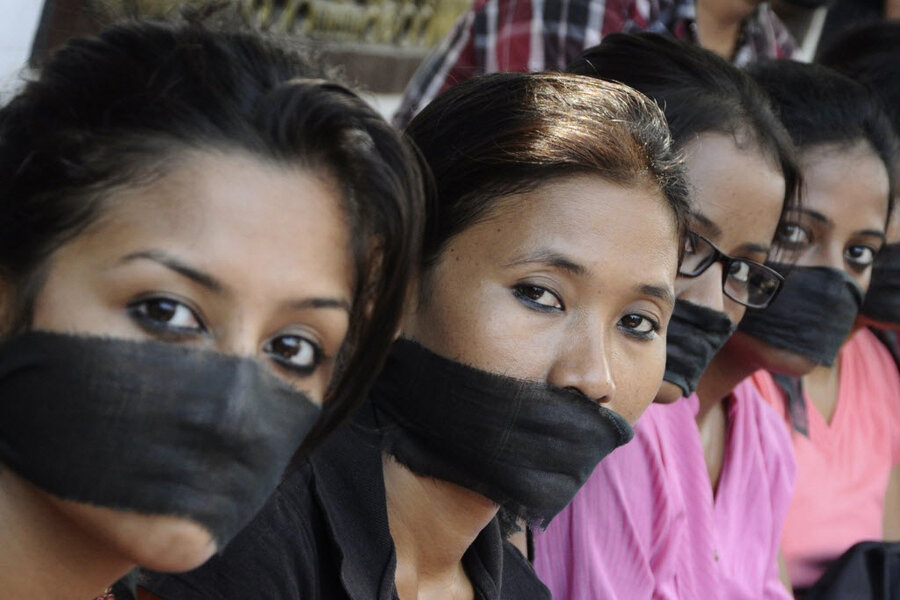Mumbai police arrest second suspect in gang rape of photojournalist
Loading...
| New Delhi
Police on Saturday arrested a second man in the gang rape of a young photojournalist in the Indian financial hub of Mumbai, and said they had enough evidence to prosecute those responsible for a crime that has renewed public outcry over sexual violence in the country.
The victim, a 22-year-old Indian woman, remained in a hospital Saturday and was recovering well after being repeatedly raped by five men Thursday night in a deserted textile mill, said Mumbai's police commissioner, Satyapal Singh.
She and a male colleague, who was tied up and beaten during the attack, had been on a magazine assignment as interns taking photographs of a south Mumbai neighborhood where upscale malls, trendy restaurants and luxury condominiums sit alongside sprawling slums and abandoned mills.
Police said the suspects approached the journalists on the pretense of helping them get permission to shoot inside the crumbling building.
The first suspect arrested, an unemployed 19-year-old man from south Mumbai, appeared in court Saturday and was ordered to remain in custody until Aug. 30, police said. Dozens of protesters rallied and called for justice outside the court.
A second suspect was arrested before dawn Saturday and confessed to authorities about his involvement in the incident, Singh told reporters. Members of India's elite crime unit were hunting three more suspects.
Singh said police had the evidence needed to prosecute the five suspects, including testimony given by the woman immediately after the attack while she was in the hospital receiving treatment.
The attack incensed many in India already sickened by sexual violence after the deadly gang rape of a 23-year-old student on a bus in New Delhi in December raised alarms about women's safety and revealed a culture in which rape victims are often pressed by social pressure or police into keeping silent.
Pledging to crack down, the federal government created fast-track courts, increased prison terms for rape, and criminalized voyeurism, stalking, acid attacks and the trafficking of women.
But Thursday's gang rape reignited debate over whether more measures, including educational outreach, were needed to improve safety for women.
"It is appalling that a young woman working in the heart of Mumbai was attacked in this manner," Bob Dietz, Asia program coordinator for the New York-based Committee to Protect Journalists, said in a statement.
The Indian Women's Press Club demanded authorities "provide a secure environment for women on a priority basis." Journalists rallied in Indian cities from the south-coast metropolis of Chennai to Gauhati in northeast Assam state.
Politicians across parties expressed outrage. Congress Party leader Sonia Gandhi said she was "saddened and pained" by the "heinous crime," while Parliament asked for a detailed report on the investigation and the government urged the "harshest" punishment for those found guilty.
The Tourism Ministry said it was launching a nationwide "I Respect Women" campaign to improve security and "raise awareness about the need for more sensitive behavior toward women." India is particularly worried about its image abroad, after a Swiss bicycle tourist was gang raped in March in central Madhya Pradesh state and an American woman was gang raped in June in the northern resort town of Manali.
About 1,000 people wearing black armbands protested Friday night in Mumbai, long considered one of India's safest cities for women.
"If such an incident can take place with a media person in a metropolis like Mumbai, what can be said about the security of a common woman in smaller towns?" said S.M. Pari, president of the Indian Media Photographers' Club, according to the Press Trust of India news agency.
Local media were providing a steady stream of reports on new rape cases across India. A 16-year-old girl was in critical condition Saturday after being raped and stabbed in the throat Tuesday in the eastern state of Orissa, according to PTI. In Jharkhand state to the north, a group of bandits allegedly gang raped a female police constable before dawn Thursday on a highway as she was driving to attend her brother-in-law's cremation.
Follow Katy Daigle on Twitter at http://twitter.com/katydaigle







